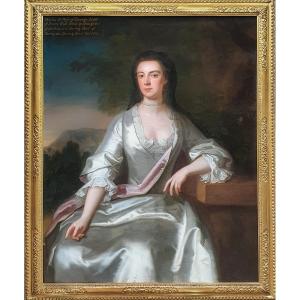This work formed part of the collection of family pictures and heirlooms of the ancient Scott family at Scot’s Hall in Kent, which was the family seat for many centuries - the house was one of the most magnificent manorial residences in the county. For nearly six centuries members of this family have variously served their country with honour and repute, tracing an unbroken male descent through more than twenty generations. The family are lineal descendants of the ancient Norman family of Balliol, and can trace their descent from David le Scot, King of Scotland.
Our portrait along with other family portraits were reproduced as engravings in 1876 for the privately published "Memorials of the family of Scott, of Scot's Hall", with the permission of Margaret Anna Best nee Brett (1793-1882). Margaret Best was the widow of Thomas Fairfax Best (1786-1849) who was a great-grandson of George Scott (our sitter’s husband) and his first wife Anne (Pemberton) Scott.
The sitter is Cecilia Dering Scott (1682-1764), the only daughter of Sir Edward Dering third baronet and Elizabeth Cholmeley. She married George Scott (1673-1728) in 1706 and became his second wife (George’s first wife, Anne Pemberton (1672-1705), died in childbirth). George was a son of Sir Thomas Scott (c.1638-c.1688) and Caroline Carteret (b.1649) and was Captain of a company of foot under Heneage, Earl of Winchelsea, Lord Lieutenant of Kent and a Deputy Lieutenant and Justice of the Peace for the Lathe of Shepwav. Cecilia and George had fourteen children from 1706 to 1723. Cecilia died at Canterbury 22nd June, 1764, aged 82, and was buried at Brabourne 28th June, 1764.
George and his first wife, Anne Pemberton, had six children, the heir being Edward (1700-1765). Edward was a Captain in the Army. He was taken prisoner by the Pretender at the battle of Preston Pans, and confined in Dumbarton Castle, where he met his future wife, Margaret Sutherland (1725-1819). The couple married and afterwards Margaret procured an interview with Charles Stuart, at Holyrood Palace, and obtained from him the release of her husband, who returned to Scot's Hall on his parole. Later, Margaret was a foster-mother to the Prince of Wales (afterwards George IV.), and had the principal charge of him for many years. Later she was governess to the Princess Royal, the eldest daughter of George III. Edward’s and Margaret’s eldest son, Francis Talbot Scott inherited the estate of Scot’s Hall. He was the last of many Scots of the Scot's Hall as the manors and lands adjoining were sold by his trustees in 1784. These estates consisted of the manors of Brabourne (which had been for many centuries in the possession of his ancestors, and in the church of which, in direct male descent, they had been buried for sixteen generations), as well as those of Scot's Hall and Evegate in Smeeth and Aldington. Scot’s Hall was pulled down in 1808. Francis, who died in the prime of life, had received many offers of preferment in the legal profession and otherwise from ministers of state, and other influential persons, interested in his welfare, but they were all declined, influenced doubtless by frequent attacks of melancholia which he suffered, and from which he never recovered. From correspondence extant, it may be gathered that the compulsory sale of his patrimonial estates, and the severance of those ancient associations, greatly contributed to his melancholy that he suffered in the closing years of his life.
The portrait can be dated to around 1728, based partially on the style of clothing, which is the date of death of Cecilia’s husband, George. The portrait is characteristic of the type of portrait painted by John Vanderbank and his contemporaries.
Held in a fine period gilded carved frame.
The Scots resided in the county of Kent from the early fourteenth century to the late eighteenth century. The “Scot's Hall scrolls” consist of beautifully illustrated vellums and scrolls complete with coats of arms impaled with the arms of the families of their various spouses, are a measure of the pride of this illustrious family. They had many connections to the Royal families of the time, and wealthy landowners in that part of England.
In common with many families in early English times of Anglo-Saxon origin and descent, the family of Scott in Kent never appear to have exhibited an ambition to be ennobled, or to rise beyond the position of gentlemen commoners; whilst their status in Kent, and their large possessions there (thirty manors held for many generations in Kent alone), would appear to have justified such an ambition. When his brother-in-law, Lord Buckhurst, or his cousin, Lord Robert Dudley, Earl of Leicester, suggested to Queen Elizabeth that Sir Thomas Scott (our sitter’s father-in-law), for services rendered to his country as Commander of the Kentish forces on the approach of the Spanish Armada, should be ennobled, the monarch, whilst declining the suggestion, remarked with characteristic vehemence that " Sir Thomas Scott already possessed more influence in Kent than majesty itself". It is true that Sir Thomas’ wielded a great influence in the county for it is recorded that, on the receipt of the orders of the Lords of the Council on the approach of the Spanish Armada on the Wednesday, he the next day assembled four thousand men fully equipped and armed on Northbourne Downs.
The family were Yorkists during the Wars of the Roses, and appear to have avoided, with one exception, the confiscations and attainders of that period. In later times they were royalists (also with one exception) and Scot's Hall was twice searched for arms by orders of Parliament but appears to have escaped unscathed. A fine collection of family portraits, some dating from the time of Henry VII, originally at Scot's Hall, still exist - many are now in the North Carolina Museum of Art in the US.
Held in a fine quality antique carved and gilded frame.
John Vanderbank was born in London into an artistic family in 1694. The son of John Vanderbank Senior, the well-known royal tapestry weaver, Vanderbank studied painting first with his father and with the portrait painter Jonathan Richardson. He was one of Godfrey Kneller's earliest pupils at the Academy of Painting from 1711, and in 1720, when Kneller’s academy began to decline, started his own Academy of painting in St. Martin's Lane with Louis Cheron. He was quite successful and benefited from a significant clientele for portraits as is evident in the many works that were engraved by John Faber. In 1738 the antiquary George Vertue wrote 'Mr John Vanderbank has of late or some years had a gret run of Busines - painting persons of Quality and distinction'. He died in London in 1739.
Provenance:
From the sitter at Scot's Hall, Smeeth, Kent, and thence by descent through marriage to;
Thomas Fairfax Best (1786-1849), Chilston Park and Wierton, Kent, before 1876; and thence by descent through the family to;
Hugh Scott (1885-1960);
Phillips London: December 14, 1993 [Lot 7] Attributed to Johan Vanderbanck the Elder;
Private collection France
Measurements:
Height 142cm, Width 118cm framed (Height 56”, Width 46.5” framed)







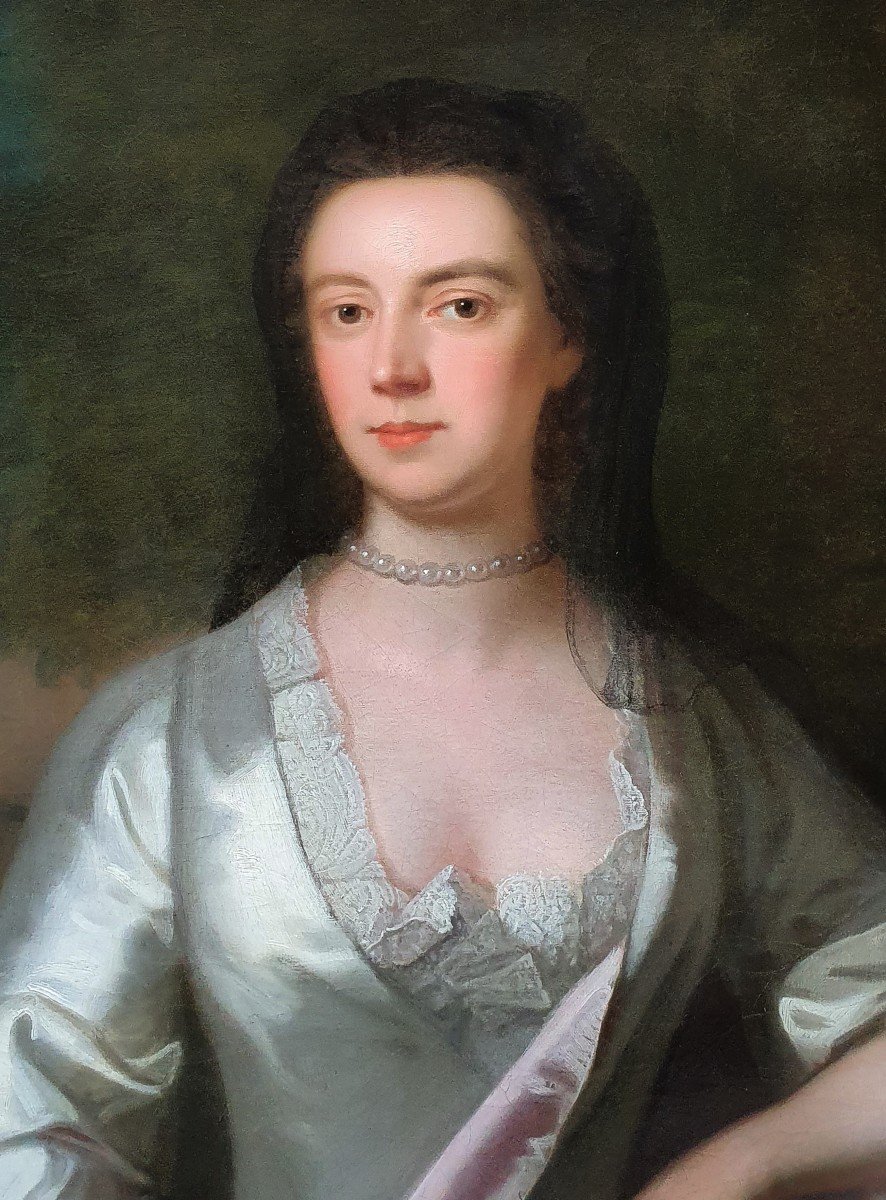





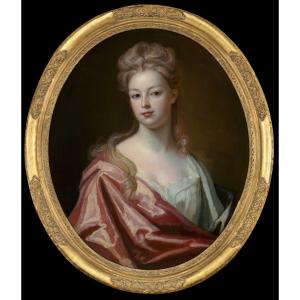

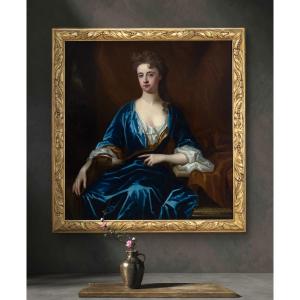
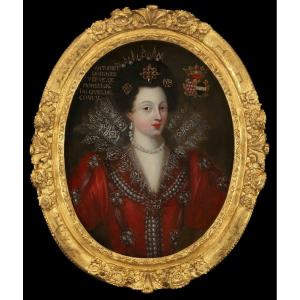




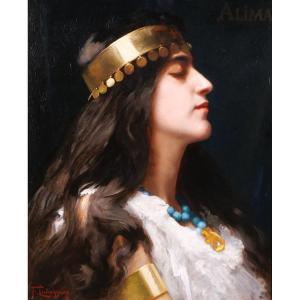
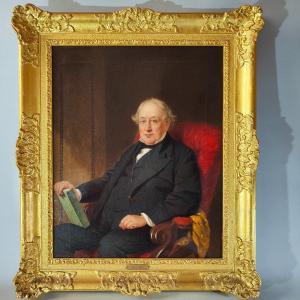



 Le Magazine de PROANTIC
Le Magazine de PROANTIC TRÉSORS Magazine
TRÉSORS Magazine Rivista Artiquariato
Rivista Artiquariato
